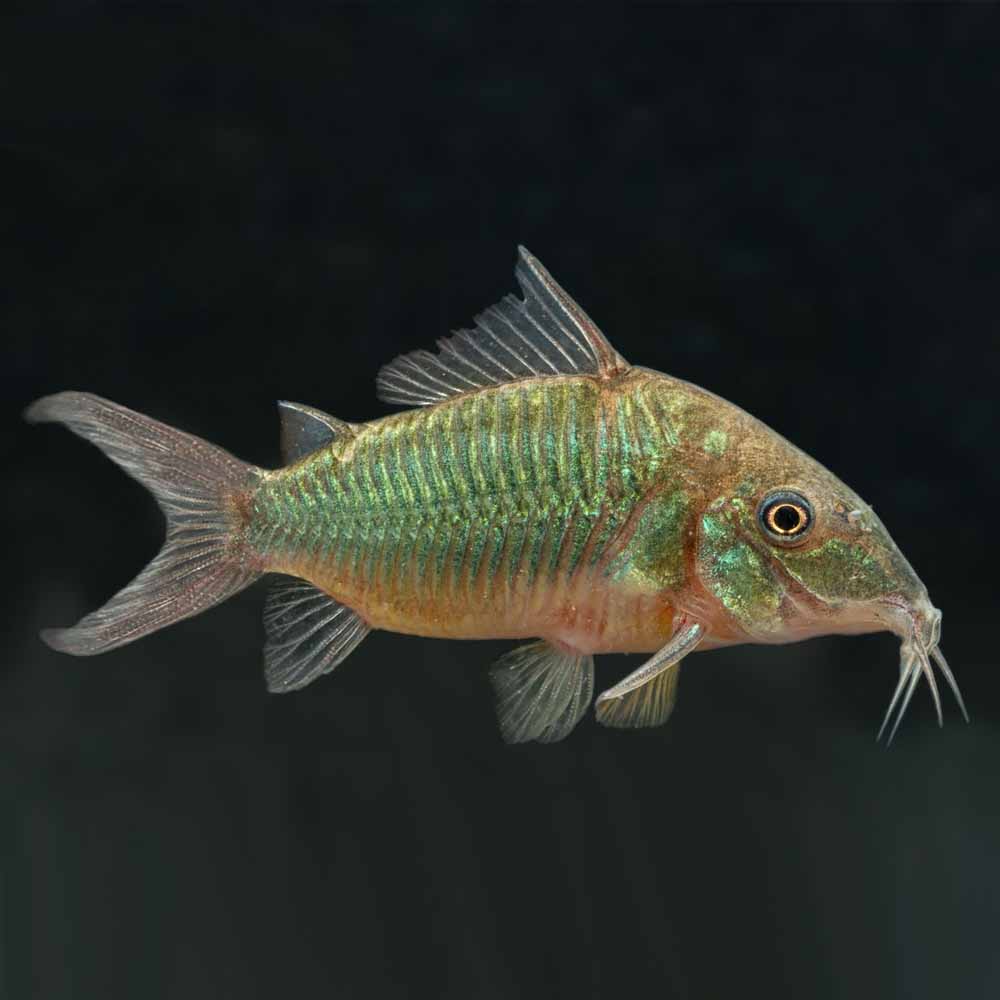Corydoras Splendens (CASTELNAU, 1855)
Emerald ‘Brochis’
Synonyms
Callichthys splendens Castelnau 1855; Brochis splendens (Castelnau 1855); Callichthys taiosh Castelnau 1855; Brochis dipterus Cope 1872; Corydoras semiscutatus Cope 1872; Brochis coeruleus Cope 1872; Chaenothorax bicarinatus Cope 1878; Chaenothorax eigenmanni Ellis 1913
Etymology
Corydoras: from the ancient Greek κόρυς (korus), meaning “helmet”, and δορά (dora), meaning “skin, hide of animal”, alluding to the rows of bony plates on the flanks of members of the genus.
splendens: from the Latin splendens, which means “shining, sparkling, sparkling, sparkling, shining, shining”.
Classification
Order: Siluriformes Family: Callichthyidae
Distribution
This species is one of the most widespread and has been recorded in much of the Amazon basin in Brazil, Peru, Ecuador and Colombia.
It is thought that certain populations may come to represent distinct species in the future, and this may involve the revalidation of some of the above synonyms.
The type locale is given simply as ‘Rio Tocantins, Brazil’.
Habitat
This species tends to form aggregations in smaller tributaries and still water bodies, such as backwaters, ox arches and marginal lakes.
Maximum Standard Length
70 – 80 mm.
Aquarium Size
Minimum base dimensions of 120 ∗ 45 cm or equivalent are recommended.
It is advisable to find a filter that has a water flow between 4 to 5 times the volume of your aquarium. With a volume of 243 liters.
Maintenance
The ideal is to use a fine sand substrate, although rounded gravel is an acceptable alternative as long as it is kept scrupulously clean.
Other decoration is largely by personal choice, but some coverage must be provided to give fish safety.
water conditions
Temperature: 20 – 28°C
pH: 5.0 – 8.0
Hardness: 36 – 268 ppm
Diet
Corydoras spp are forage omnivores and accept most dry foods that sink, as well as small live and frozen varieties such as chironomid larvae (blood worm), Tubifex, etc.
Feeding a varied diet will ensure that the fish are in optimum condition.
Under no circumstances should they be expected to survive on “leftovers” from other aquarium inhabitants or counted to “clean” the aquarium.
behavior and compatibility
Peaceful and sociable. It should be kept in a group of at least 6-8 individuals.
sexual dimorphism
Adult females are visibly more rounded, taller in body, and grow slightly larger than males.
reproduction
Eggs are placed near the surface of the water and are easy to remove and be placed elsewhere for breeding.





